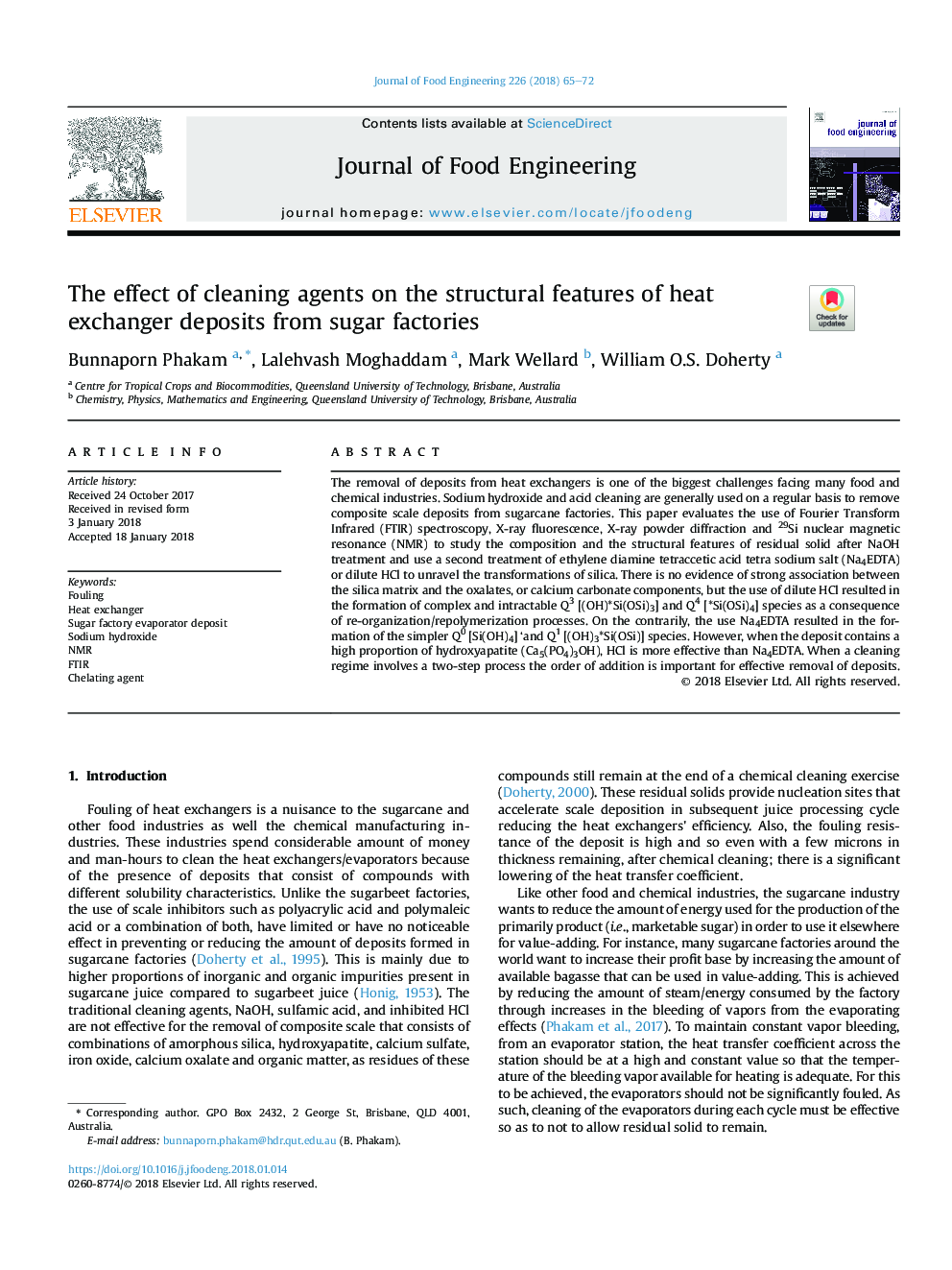| Article ID | Journal | Published Year | Pages | File Type |
|---|---|---|---|---|
| 6664639 | Journal of Food Engineering | 2018 | 8 Pages |
Abstract
The removal of deposits from heat exchangers is one of the biggest challenges facing many food and chemical industries. Sodium hydroxide and acid cleaning are generally used on a regular basis to remove composite scale deposits from sugarcane factories. This paper evaluates the use of Fourier Transform Infrared (FTIR) spectroscopy, X-ray fluorescence, X-ray powder diffraction and 29Si nuclear magnetic resonance (NMR) to study the composition and the structural features of residual solid after NaOH treatment and use a second treatment of ethylene diamine tetraccetic acid tetra sodium salt (Na4EDTA) or dilute HCl to unravel the transformations of silica. There is no evidence of strong association between the silica matrix and the oxalates, or calcium carbonate components, but the use of dilute HCl resulted in the formation of complex and intractable Q3 [(OH)*Si(OSi)3] and Q4 [*Si(OSi)4] species as a consequence of re-organization/repolymerization processes. On the contrarily, the use Na4EDTA resulted in the formation of the simpler Q0 [Si(OH)4] 'and Q1 [(OH)3*Si(OSi)] species. However, when the deposit contains a high proportion of hydroxyapatite (Ca5(PO4)3OH), HCl is more effective than Na4EDTA. When a cleaning regime involves a two-step process the order of addition is important for effective removal of deposits.
Related Topics
Physical Sciences and Engineering
Chemical Engineering
Chemical Engineering (General)
Authors
Bunnaporn Phakam, Lalehvash Moghaddam, Mark Wellard, William O.S. Doherty,
